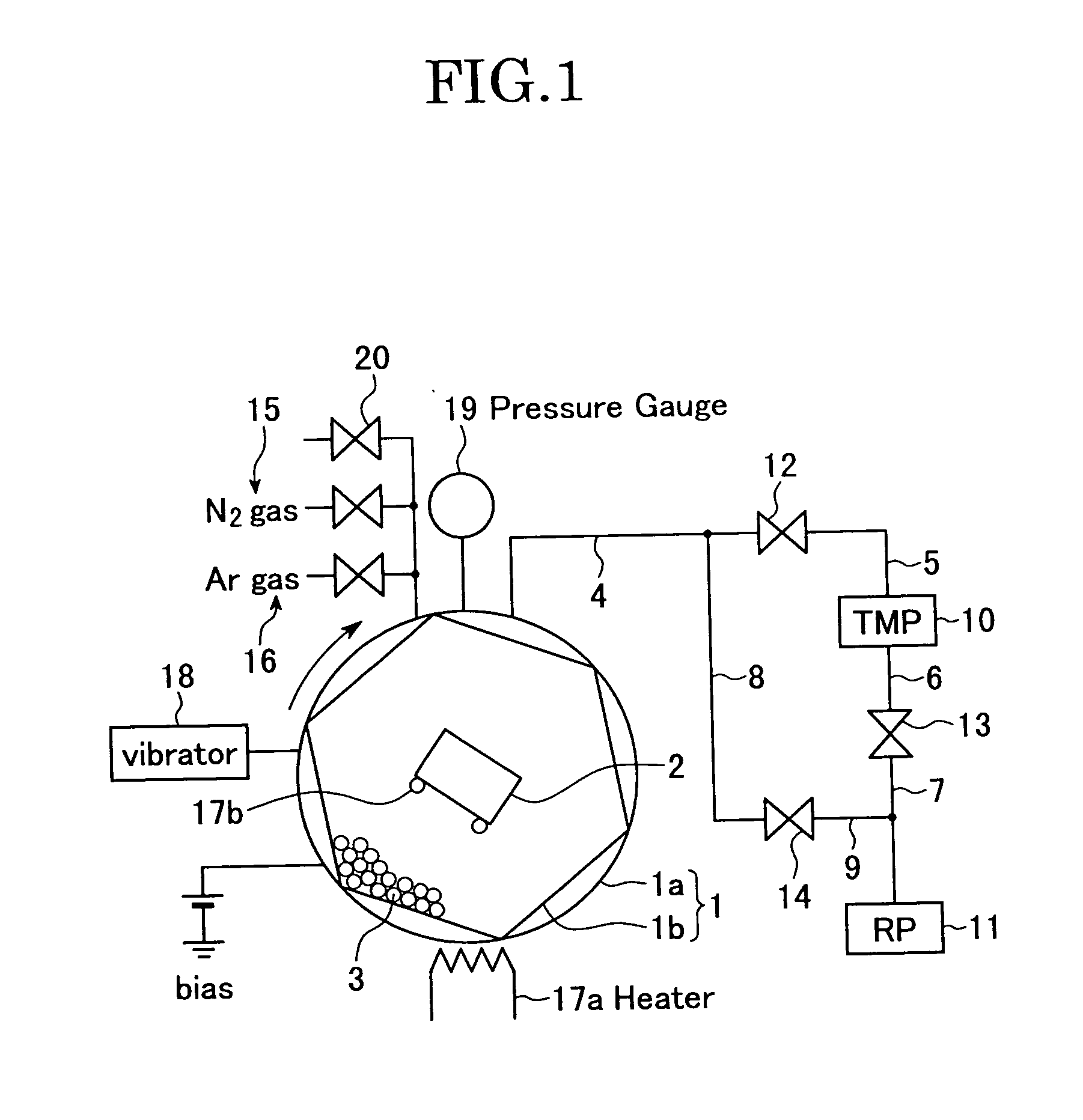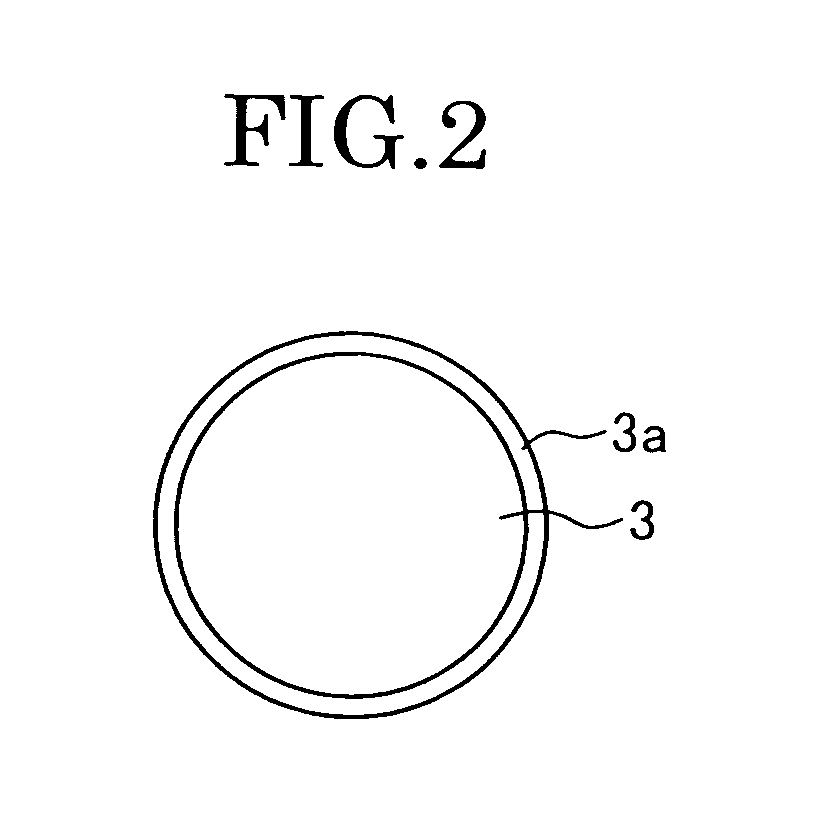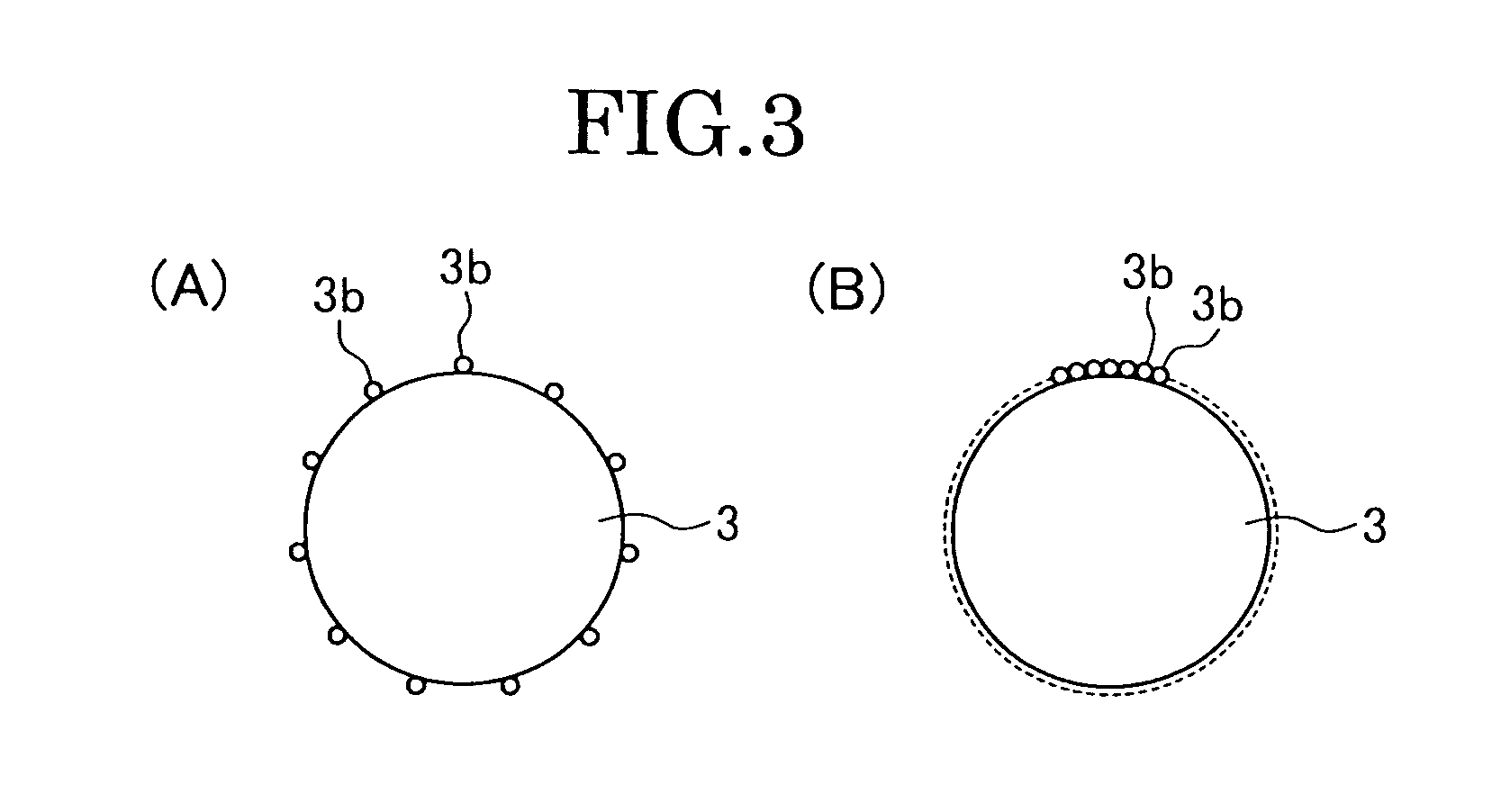Fine Particle
a technology of fine particles and catalysts, applied in the field of fine particles, can solve the problems of difficult control of the above factors and the reduction of the activity of the catalyst, and achieve the effect of easy evaporated
- Summary
- Abstract
- Description
- Claims
- Application Information
AI Technical Summary
Benefits of technology
Problems solved by technology
Method used
Image
Examples
Embodiment Construction
[0025] Hereinafter, preferred embodiments of the present invention will be described in detail with reference to the drawings.
[0026]FIG. 1 is a diagram schematically showing a structure of a polygonal barrel sputtering device used in one embodiment according to the present invention. The polygonal barrel sputtering device is one for coating surfaces of fine particles (powder) with at least one of the metal catalyst, the oxide catalyst and the compound catalyst as ultra-fine particles having a grain diameter smaller than that of the fine particles (herein, the term “ultra-fine particle” means a fine particle having a grain diameter smaller than that of the fine particle) or thin film in a state free from impurities or with an extremely few impurities.
[0027] The polygonal barrel sputtering device has a vacuum container 1 for coating fine particles 3 with ultra-fine particles or thin films. The vacuum container 1 includes a cylindrical body 1a having a diameter of 200 mm and a barrel...
PUM
| Property | Measurement | Unit |
|---|---|---|
| diameter | aaaaa | aaaaa |
| pressure | aaaaa | aaaaa |
| pressure | aaaaa | aaaaa |
Abstract
Description
Claims
Application Information
 Login to View More
Login to View More - R&D
- Intellectual Property
- Life Sciences
- Materials
- Tech Scout
- Unparalleled Data Quality
- Higher Quality Content
- 60% Fewer Hallucinations
Browse by: Latest US Patents, China's latest patents, Technical Efficacy Thesaurus, Application Domain, Technology Topic, Popular Technical Reports.
© 2025 PatSnap. All rights reserved.Legal|Privacy policy|Modern Slavery Act Transparency Statement|Sitemap|About US| Contact US: help@patsnap.com



